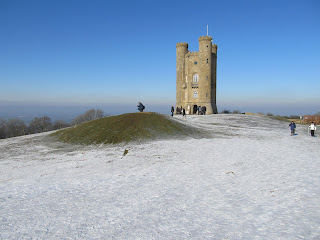A Saturday morning visit to my Aunt and Godmother in Abberley but just enough time for a small detour to see Witley Court. I remember coming here as a child with my parents and climbing over the fence to see the ruins. Times have changed ;Witley Court, is a Grade 1 listed building and was once one of the great
houses of the Midlands,
but today it is a ruin after being devastated by fire in 1937.witley-court-and-gardens
There was a sandstone medieval church on the site but this was replaced by the Foley's with the magnificent Baroque church which can be seen on the right of the picture below.
See greatwitleychurch for more about the church
The surrounding grounds are also being developed and opened to the public
The Tower was the brainchild
of the great 18th Century landscape designer, Capability Brown. His vision was
carried out for George William 6th Earl of Coventry with the help of renowned architect
James Wyatt and completed in 1798.
Wyatt designed his "Saxon Tower"
as an eccentric amalgamation of architectural components ranging from turrets,
battlements and gargoyles to balconies.
Members of the
Arts and Crafts movement used Broadway
Tower as a holiday retreat.
Pre-Raphaelite artists William Morris,
Dante Gabriel Rossetti and Edward Burne-Jones were frequent visitors. Indeed,
it was Broadway and the Tower that sparked Morris'
campaign for the preservation of historic monuments.
Close to Broadway Tower is a memorial to the crew of
5 of a Royal Air Force Whitley Bomber, killed when it crashed
here during an operational training flight on June 2nd 1943.










No comments:
Post a Comment